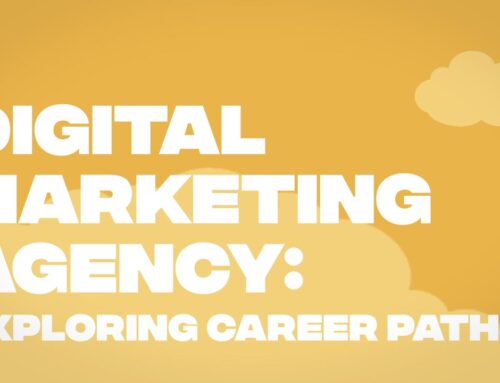Digital marketing, though rewarding, is not without its challenges. We delve into the factors that contribute to stress in the digital marketing landscape, backed by research, statistics, and expert opinions.
Table of Contents
- Introduction
- The Complex Landscape of Digital Marketing
- High-Stakes Decisions and Performance Pressure
- The Demand for Continuous Learning
- Maintaining a Healthy Work-Life Balance
- Frequently Asked Questions/Answers
- Final Thoughts
- Sources
Introduction
In today’s digitally dominated age, digital marketing has become an integral part of our lives. Every tweet we read, every email we open, every ad we click, every search we make – each is a testament to the growing importance of digital marketing. It’s a complex, multi-faceted, and rapidly evolving field that has transformed how businesses connect with consumers and how we, as consumers, make our purchasing decisions.
In this landscape, digital marketers are the ones orchestrating this massive machinery. They are the architects of the online world, developing strategies, creating content, optimizing algorithms, and interpreting data to make every digital touchpoint a potential sale, a potential customer. They are, in essence, the puppeteers of this digital theater.
But like any job, digital marketing is not without its challenges. Every day, digital marketers navigate through a series of high-stakes decisions, technological updates, shifting trends, and relentless demands for performance and results. The digital landscape, unlike traditional marketing landscapes, never sleeps – and sometimes, neither do the marketers.
High rewards often come with high demands. This axiom certainly holds true for digital marketing professionals. With the advancement of technology and increased market competition, the stakes have become higher, and the job has become more intense. As per a report by Adobe, 64% of marketing professionals find the pace of technological change in the marketing industry highly challenging. Digital marketing is no longer just about creating catchy slogans or visually appealing designs; it’s about handling big data, machine learning, artificial intelligence, virtual reality, and so much more.
Consequently, the job of a digital marketer can be highly stressful. It’s a role that requires you to be on your toes 24/7, thinking of the next big idea, anticipating the next big trend, ready to pivot at a moment’s notice. Performance pressure is high. After all, the strategies implemented by digital marketers directly impact a company’s bottom line. One wrong move could lead to substantial financial losses, and in the world of the internet, news of a marketing faux pas spreads like wildfire.
Moreover, the profession demands continuous learning. With the digital landscape evolving at lightning speed, the skills and knowledge that made a marketer successful yesterday might be obsolete today. A LinkedIn survey revealed that 74% of employees felt that they weren’t achieving their full potential at work due to lack of development opportunities. It’s a race to stay relevant, and the fear of falling behind is a constant stressor.
Lastly, digital marketers often grapple with maintaining a healthy work-life balance. The 24/7 nature of the internet, combined with the global reach of digital marketing campaigns, can blur the lines between professional and personal time. Overwork and burnout become real risks. The World Health Organization has even recognized burnout as an occupational phenomenon.
In this article, we will delve deeper into these challenges. We will provide a detailed, research-backed examination of why digital marketing can be a stressful job, focusing on aspects such as the complex and rapidly changing digital marketing landscape, the high-stakes decisions and performance pressure, the constant demand for learning, and the struggle to maintain a work-life balance. By understanding these factors, we hope to shed light on the often underappreciated challenges faced by digital marketers and generate conversations on how to create a more supportive and sustainable work environment in this vital industry.
By the end of this piece, you’ll have a deeper understanding of the stressors in the world of digital marketing. Not only will this understanding make you appreciate the work digital marketers do even more, but it could also provide insights on how to manage these stressors if you’re a part of this ever-evolving industry.
The Complex Landscape of Digital Marketing
In order to comprehend the stresses digital marketers face, it’s essential to first understand the environment they operate in. The world of digital marketing is dynamic, fast-paced, and incredibly diverse. Every day, marketers face a multitude of platforms, tools, techniques, and consumer behaviors that they must master and leverage to their advantage.
This digital landscape encompasses several elements: search engine optimization (SEO), pay-per-click (PPC) advertising, social media marketing, content marketing, email marketing, mobile marketing, affiliate marketing, and more. Each area is a discipline in its own right, with its own set of rules, algorithms, best practices, and trends that change regularly. For instance, Google’s search algorithms – the backbone of SEO – are updated hundreds of times per year, demanding that marketers stay abreast of these changes to ensure their websites maintain their search engine rankings.
Moreover, the advent of emerging technologies like artificial intelligence (AI), augmented reality (AR), machine learning (ML), and blockchain is increasingly adding another layer of complexity. AI, for example, is now used in everything from content creation to personalized marketing, customer service, and predictive analysis. These technologies are not just transforming the way marketing is done, but also the skills required to do it. As a result, digital marketers must constantly learn and adapt, adding pressure to an already demanding role.
Navigating this digital terrain requires a marketer to be akin to a jack-of-all-trades, master of all. They need to be both creative and analytical, able to write compelling content and crunch numbers, understand human psychology, and master machine algorithms. It’s a role that requires wearing many hats, often all at once.
Adding to this complexity is the nature of online audiences. Unlike traditional marketing, where audiences were often localized and their preferences relatively stable, online audiences are global, diverse, and fickle. Trends can change overnight, a product can go from obscurity to viral sensation within hours, and a single negative review can snowball into a PR crisis. Social media platforms themselves evolve quickly, with user preferences shifting between platforms, and new platforms emerging frequently. Remember, Instagram did not exist before 2010, Snapchat before 2011, and TikTok only became internationally available in 2018. Yet, these platforms now command the attention of millions of users daily, and digital marketers must be adept at leveraging them.
The sheer velocity of change in the digital marketing landscape means there’s always a learning curve. As per a 2022 Adobe report, 64% of marketing professionals find the speed of technological change in the marketing industry to be “very challenging”. The need to keep up with the rapid pace of change can be both exhilarating and exhausting, adding to the stress experienced by digital marketers.
Despite the challenges, navigating the complex landscape of digital marketing also presents immense opportunities. With the ability to reach consumers anywhere in the world, at any time, and collect unprecedented amounts of data about their preferences and behaviors, digital marketing has the potential to deliver highly targeted, personalized, and effective marketing campaigns. The challenge for digital marketers is to balance the pressures of staying ahead in this complex landscape with the opportunities it presents.
High-Stakes Decisions and Performance Pressure
In the fast-paced world of digital marketing, marketers often face high-stakes decisions that can significantly impact the success of their campaigns and, ultimately, the bottom line of the businesses they represent. The success of a digital marketing campaign is largely data-driven. Every click, every view, every share, every sale can be tracked, measured, and analyzed. While this data-driven approach provides valuable insights, it also introduces a high level of performance pressure.
Marketing budgets are often substantial, and each dollar spent is expected to yield a measurable return on investment (ROI). Marketers are regularly tasked with making decisions about where to allocate resources to generate the best possible ROI. Should they invest more in PPC or SEO? Is it worth investing in a new social media platform or sticking with the tried-and-true ones? Should they target a new demographic or focus on their current audience? Every decision carries potential risks and rewards, and the pressure to make the right call can be intense.
Moreover, the performance of digital marketers is constantly under scrutiny. Key performance indicators (KPIs), such as website traffic, click-through rates, conversion rates, social media engagement, and customer acquisition costs, are tracked relentlessly. These metrics are often tied to a marketer’s performance evaluation, bonuses, and career progression. This constant scrutiny can contribute to high stress levels. As per a survey by Workfront, now Adobe Workfront, 25% of marketers reported experiencing “high” or “overwhelming” stress levels at work on a regular basis.
Furthermore, the rise of real-time analytics means that digital marketers are often expected to deliver results quickly. Unlike traditional marketing, where the impact of a campaign might take weeks or months to evaluate, digital marketing results can often be seen in real time. This immediacy can be both a blessing and a curse. On the one hand, it allows marketers to quickly adjust their strategies based on performance. On the other hand, it can also create an expectation for instant success, adding to the pressure they face.
The stakes are further heightened by the public nature of digital marketing. A poorly received marketing campaign can be a PR disaster, damaging a company’s reputation and brand image. With the rise of social media, consumers have become increasingly vocal about their opinions, and news of a marketing misstep can spread quickly. Marketers must therefore be extremely careful in their messaging and strategy, adding another layer of stress to their roles.
The constant pressure to perform and the high stakes of decision-making can be a significant source of stress in the digital marketing industry. However, this pressure also drives innovation and progress, pushing marketers to constantly improve their skills and strategies to achieve success in this competitive field.
The Demand for Continuous Learning
The digital marketing industry is one that’s characterized by relentless evolution. With new technologies emerging, consumer behavior shifting, and digital platforms updating their algorithms regularly, what worked yesterday might not work today. For digital marketers, the need to keep up with these changes and continually upgrade their skills is a fundamental part of the job.
Every new social media platform, every Google algorithm update, every emerging technology – each brings with it a learning curve that marketers must quickly overcome to stay competitive. As mentioned earlier, AI, AR, machine learning, and blockchain are becoming increasingly integral to digital marketing, necessitating that marketers familiarize themselves with these technologies. Staying on top of SEO alone requires keeping track of the hundreds of changes Google makes to its search algorithms every year.
The rate at which the digital marketing landscape evolves means that continuous learning is not a luxury, but a necessity. A LinkedIn survey found that 94% of employees would stay at a company longer if it invested in their learning and development. This underscores the importance employees place on upskilling and the pressure they feel to keep their skills relevant.
The demand for continuous learning can, however, contribute to stress. Learning takes time and mental energy, both of which are often in short supply in the fast-paced world of digital marketing. The pressure to keep up with new trends and technologies, coupled with the demands of daily tasks, can lead to feelings of overwhelm and burnout. It’s akin to running a race that never ends – there’s always a new finish line to cross.
Furthermore, there’s a sense of fear of missing out (FOMO) or getting left behind. With the rate at which new marketing technologies and strategies are emerging, there’s often a worry that one might miss out on the next big thing. This fear can further add to the stress experienced by digital marketers.
Organizations can help alleviate this pressure by investing in their employees’ learning and development. Regular training programs, opportunities to attend industry conferences and webinars, access to online courses, and a culture that encourages learning can all help digital marketers keep their skills up-to-date without feeling overwhelmed.
In a field that’s constantly evolving, continuous learning is the only way to stay relevant. It’s a challenging aspect of the job, but also one that offers growth, progression, and the excitement of always being on the cutting-edge of technological and consumer trends.
Maintaining a Healthy Work-Life Balance
Maintaining a healthy work-life balance is a common challenge across many professions, but it’s particularly pronounced in the world of digital marketing. The reasons for this are twofold: the 24/7 nature of the internet and the global reach of digital marketing.
The internet never sleeps. Social media feeds continuously update, emails come in at all hours, websites are accessed around the clock, and digital marketing campaigns run non-stop. This constant activity can make it difficult for digital marketers to “switch off”. There’s always a new development to respond to, a new data point to analyze, a new customer comment to address. The line between work time and personal time can become blurred, leading to longer work hours and less time for rest and relaxation.
The global reach of digital marketing adds another layer to this challenge. Digital marketers often work on campaigns that target audiences in different time zones. This can mean early morning or late-night meetings, non-standard working hours, and being “on-call” to respond to developments in these markets. Over time, this can lead to fatigue, burnout, and a feeling of always being “on the job”.
Workfront’s State of Work report found that 57% of workers said they work more than 40 hours a week, and 80% of those surveyed said they work nights and weekends. In a separate survey by Wrike, 94% of workers reported experiencing stress at work, and over half believed that their work-life balance was getting worse.
Overwork and the struggle to maintain a healthy work-life balance can lead to a range of mental and physical health issues, including anxiety, depression, sleep disorders, and heart disease. The World Health Organization recognizes work-related burnout as an occupational phenomenon, defined as “a syndrome resulting from chronic work-related stress, with symptoms characterized by feelings of energy depletion or exhaustion; increased mental distance from one’s job, or feelings of negativism or cynicism related to one’s job; and reduced professional efficacy”.
Therefore, maintaining a healthy work-life balance is not just important for a digital marketer’s well-being; it’s crucial for their performance and effectiveness as well. Overworked and stressed employees are likely to be less productive, less creative, and less engaged, which can impact the success of their marketing campaigns.
To address this challenge, it’s important for organizations to foster a culture that respects work-life balance. This can include policies that limit after-hours work, encourage regular breaks, and allow flexible working arrangements. It’s also vital for individuals to set boundaries and prioritize their personal time. Self-care practices such as regular exercise, healthy eating, mindfulness, and ensuring adequate rest can also help manage stress levels and improve overall well-being.
Frequently Asked Questions/Answers
Final Thoughts
Understanding the challenges and sources of stress in digital marketing is a crucial first step in addressing them. The complex landscape, high-stakes decisions, continuous learning, and the struggle to maintain a work-life balance all contribute to the stress digital marketers experience. However, recognizing these challenges allows for solutions, resilience, and growth.
The most important takeaway from this article is that while digital marketing can be stressful, it’s also an incredibly dynamic and rewarding field. One should not see the stressors as detractors but rather indicators of a profession that’s impactful, evolving, and significant in today’s digital age.
Organizations should make concerted efforts to foster a culture of learning and resilience, where employees are given the resources to update their skills, and are also provided with support to manage work-related stress. Digital marketers, too, should prioritize their mental well-being, ensuring they set boundaries to maintain a healthy work-life balance.
Sources
- Adobe. (2022). Digital Trends 2022. Link
- Workfront. (2022). The State of Work. Link
- LinkedIn Learning. (2022). Workplace Learning Report. Link
- Wrike. (2022). Happiness Index. Link
- World Health Organization. (2019). Burn-out an “occupational phenomenon”: International Classification of Diseases. Link
This post offers a glimpse into the challenges faced by digital marketers. While stress is a part of the job, with the right support and approach, it can be managed effectively. It’s important for those in the profession to remember the rewarding aspects of digital marketing and the significant role they play in shaping the online world.









Leave A Comment